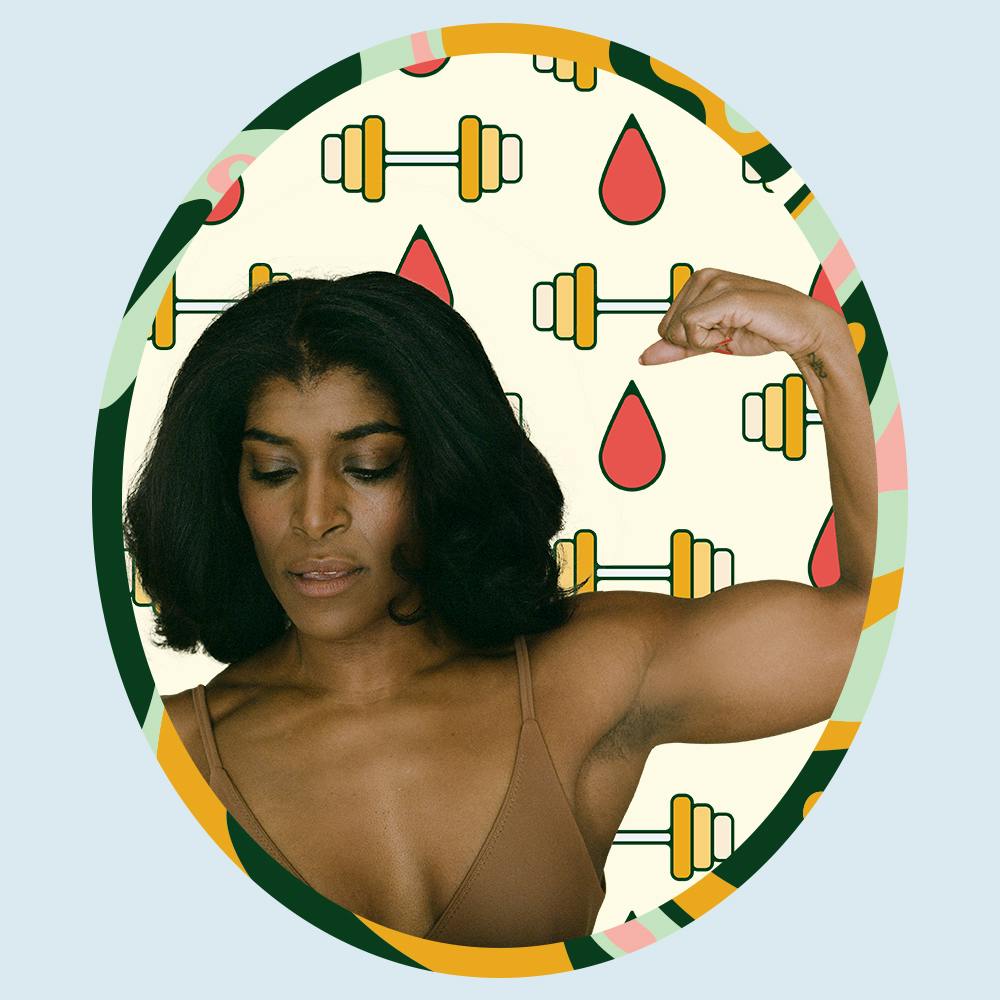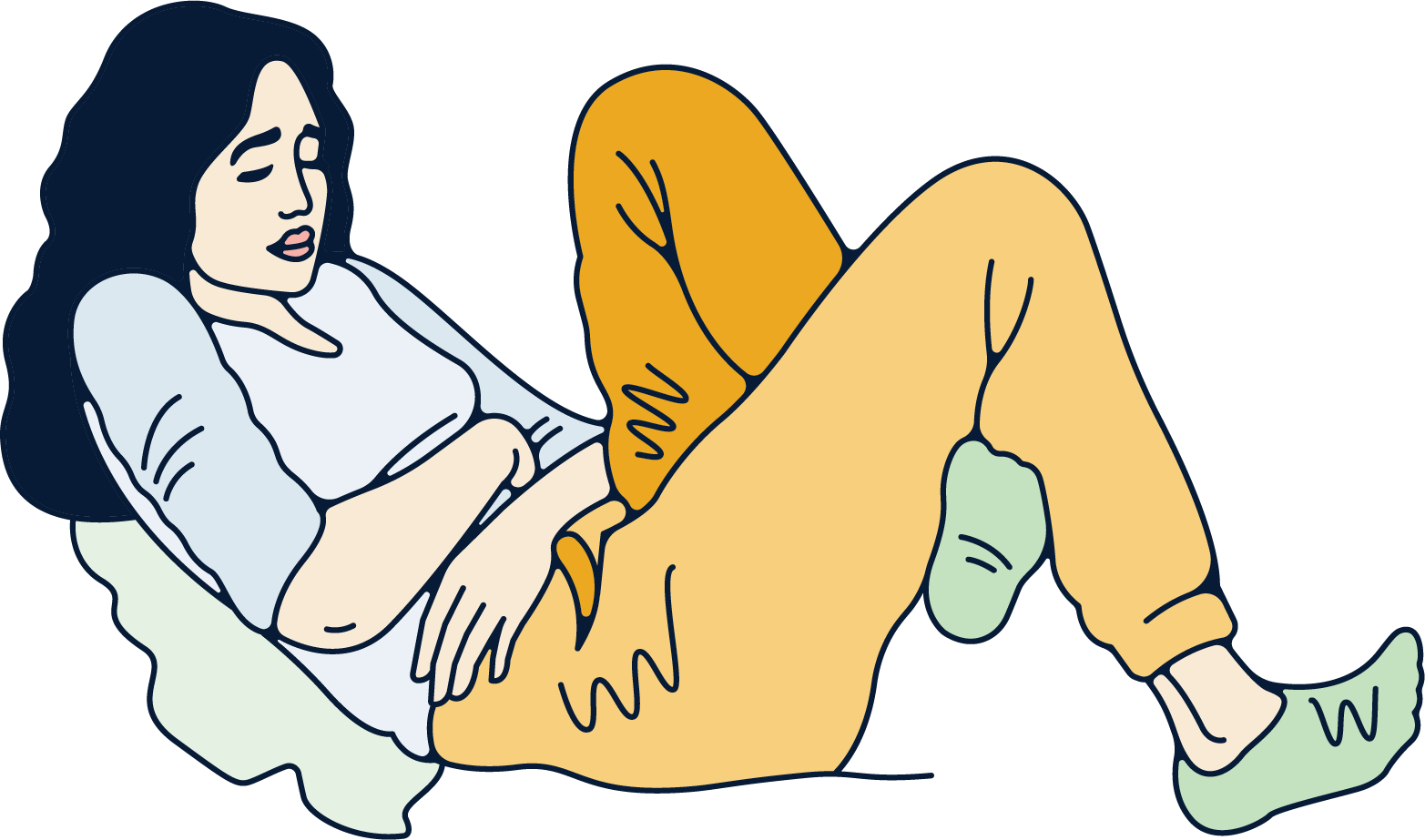Exercise is often touted as the OG form of period pain relief. If you mention menstrual cramps or PMS symptoms, chances are there’s always one person who recommends working out.
There is nothing wrong with skipping the gym when you’re on your period. For many people, the pain can be so debilitating that it leaves them bedridden – so any sort of lifting, jumping or skipping is out of the picture. Not to mention that for those living with chronic pain or disability, working out isn’t always an option.
If you can exercise but would rather claw your eyes out than hit the gym while menstruating, we feel you. Who of us didn’t use their period as an excuse to get out of PE class?
Although there is no medical reason why you shouldn’t workout on your period, it’s completely normal for energy levels and mood to be lower. But if you are able to (and can be bothered), there are a few pros to getting your body moving.
Whether you choose to exercise on your period or not, you can always count on our CBD tampons to make your period days more bearable. Daye's CBD tampons are doctor-approved and are completely plastic-free.
Benefits of exercising on your period
You’ve probably heard that working out is a proven way to relieve period pain, and we hate to be the bearer of bad news but there’s not enough empirical evidence to prove that definitively – probably because not enough studies have been conducted.
That being said, we know exercise releases endorphins, which are often described as your body’s own version of the opioid morphine. It makes sense, when you think about it, since “endorphin” is a portmanteau of “endogenous morphine” (ie. morphine produced by the body).
Endorphins are neurotransmitters produced naturally by your pituitary gland and central nervous system to cope with pain or stress. They are often called "feel-good hormones" because it increases your pain threshold and boost mood.
It’s also believed that endorphins reduce the effect of prostaglandins, the chemicals produced during your period to contract your uterus which cause cramps.
How to exercise during your cycle
Research also shows that certain types of exercise will be more beneficial depending on where you are in your cycle, but naturally the best workout is the one you enjoy doing.
If your goal is to alleviate PMS symptoms like bloating and constipation, then cardio is your friend. One study analysing young women over two months found that aerobic exercise made a significant difference in improving PMS symptoms.
During your period, on the other hand, you’re likely to get more out of strength training. Since progesterone and oestrogen are at their lowest in the menstrual and follicular phase, your body is able to access carbohydrates and glycogen—in layman’s: fuel—more easily than they would when oestrogen peaks mid-cycle (around ovulation).
Your body temperature is also lower when you're on your period, which essentially means your nervous system will tire less easily. If you’re looking to hit PBs or book a HIIT session, the first half of your cycle is the best time.
If intense exercise isn’t your kind of thing, don’t worry—you don’t have to run a marathon or do a CrossFit class to enjoy the (potentially pain-relieving) benefits. A brisk walk, yoga or even stretching can help relieve muscular pain and cramps. In fact, a 2011 study showed that the intensity and duration of dysmenorrhea were significantly lower teenage girls who performed the cat, cobra and fish yoga poses.
Whether or not you exercise while on your period is completely up to you. Understanding how the menstrual cycle affects your body, energy levels and mood will can help you optimise your workouts, but it can also be an indication of when you should rest and recover.
Ultimately, you know your body better than anyone else, so however you manage your period is fine, whether that means strength training, cardio, or lying completely still.
TL;DR
- Your energy levels and mood are at their lowest in the second part of your cycle, so don't beat yourself up if you skip the gym.
- There isn't enough empirical evidence to definitively prove that exercise helps relieve period pain, but we know it releases endorphins, which play an important role in pain management.
- Some research shows that there's a direct correlation between aerobic capacity and the severity of PMS symptoms—ie. cardio is your friend in the luteal phase. Even just a brisk walk does the trick!
- Strength training, on the other hand, pays off more in the follicular phase (from when you start menstruating to when you ovulate).
- How you manage your period is completely your choice, the important thing is listening to your body and respecting what it needs, whether that’s strength training, vinyasa yoga, or a nap.






